Matcha
What to Look for When Purchasing Ceremonial Grade Tea
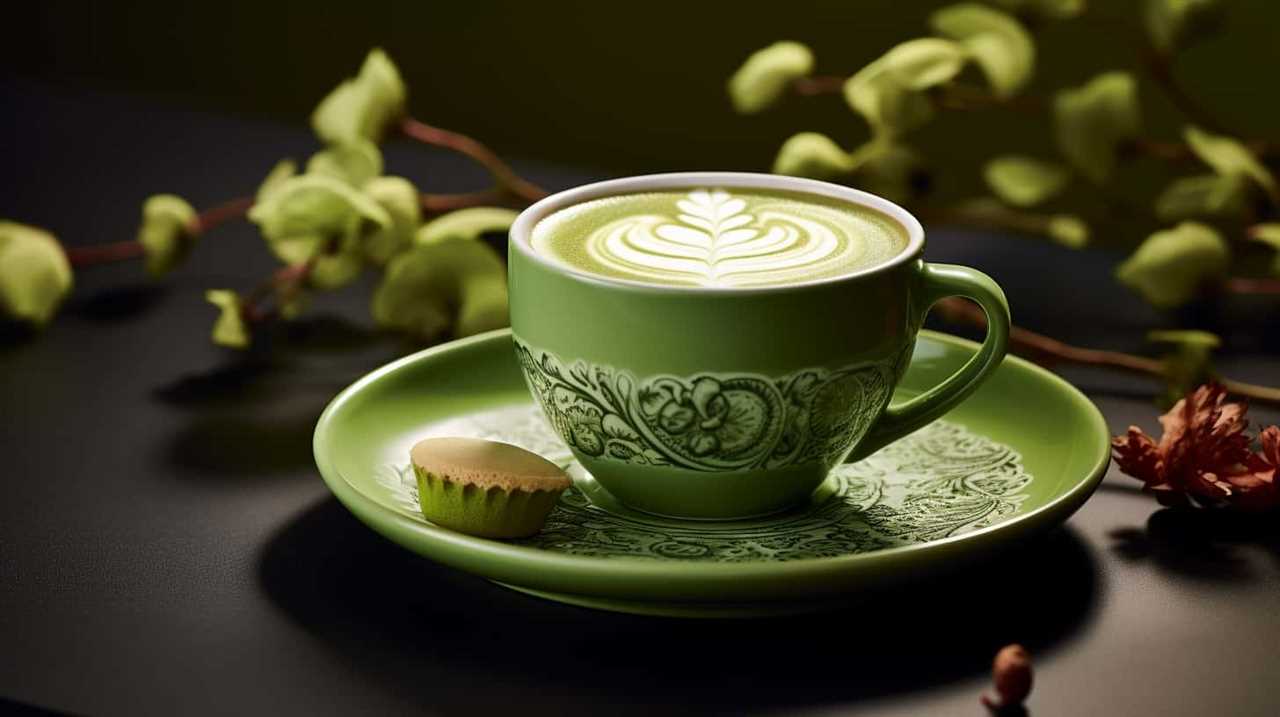
When it comes to purchasing ceremonial grade tea, we must be discerning in our choices. Did you know that only about 2% of all tea produced worldwide is classified as ceremonial grade? That means we need to be well-informed in order to select the finest quality tea for our rituals and special occasions.
In this guide, we will explore the key factors to consider when purchasing ceremonial grade tea. We will delve into the importance of authenticity, origin, color, aroma, taste, and grading systems. We will also discuss the significance of certifications, customer reviews, and recommendations from tea experts.
Furthermore, we will provide brewing and preparation guidelines to help you fully enjoy the exquisite experience of ceremonial grade tea.
Let’s embark on this journey of tea mastery together!
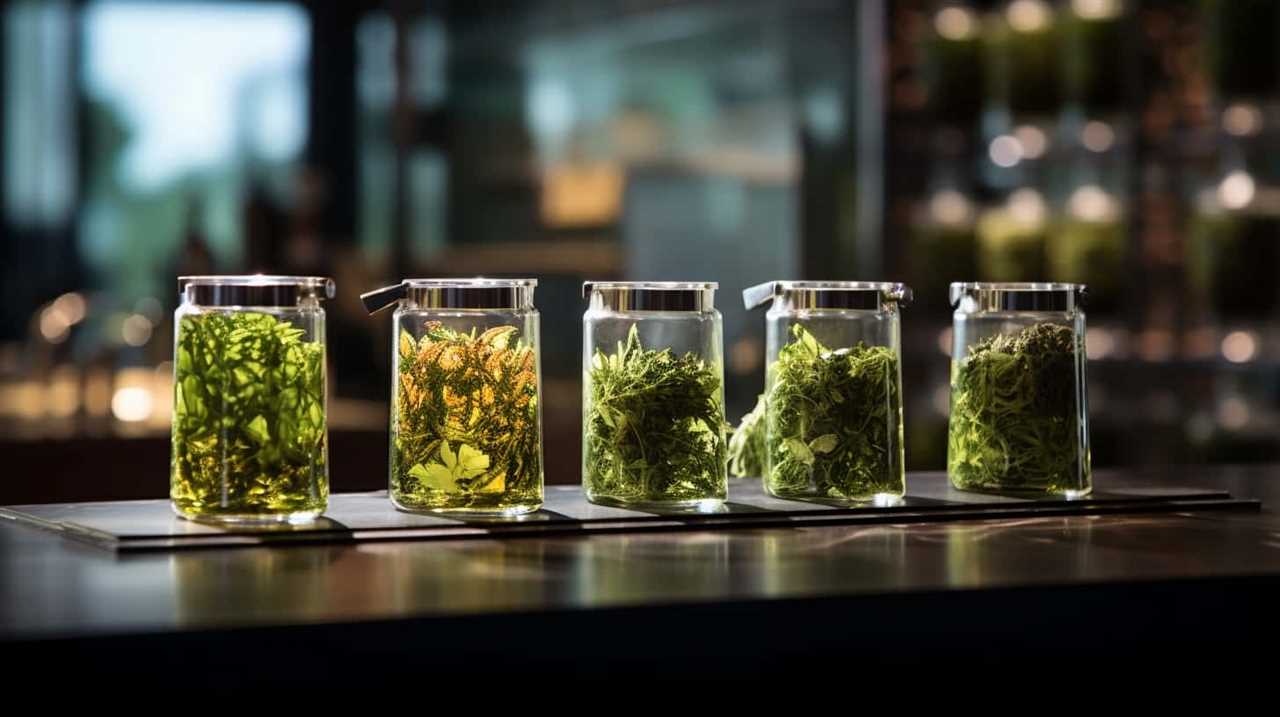
Key Takeaways
- Authenticity and origin of the tea are important factors to consider when purchasing ceremonial grade tea. Sourcing from specific regions or farms known for exceptional tea is recommended.
- Indicators of tea quality include color and appearance, aroma and fragrance, taste and flavor profile, and complexity and balance.
- Factors affecting tea quality include the aftertaste, the grading system, growing and harvesting methods, production and processing techniques, and packaging and branding.
- Ethical considerations and certifications, such as sustainable farming methods and fair trade partnerships, transparency in the supply chain, and lab testing for safety and purity, should also be taken into account when purchasing ceremonial grade tea.
Authenticity and Origin
When purchasing ceremonial grade tea, we frequently prioritize authenticity and origin. Ensuring that the tea we choose is truly ceremonial grade requires us to consider certification standards and understand the traditions of tea ceremonies.
Certification standards set the criteria for what qualifies as ceremonial grade tea, ensuring that it meets the highest quality standards. These standards may include factors such as the specific cultivar used, the processing methods employed, and the region where the tea is grown.
Understanding the tea ceremony traditions can give us insight into the authentic origins of the tea. Different tea ceremonies have specific requirements for the type and quality of tea used, often emphasizing the importance of sourcing from specific regions or farms known for producing exceptional tea.
Color and Appearance
Examining the color and appearance of the tea plays a crucial role in determining its quality when purchasing ceremonial grade tea. The visual appeal of the tea leaves can provide valuable insights into its overall quality. Here are some key factors to consider when evaluating the color and appearance of ceremonial grade tea:
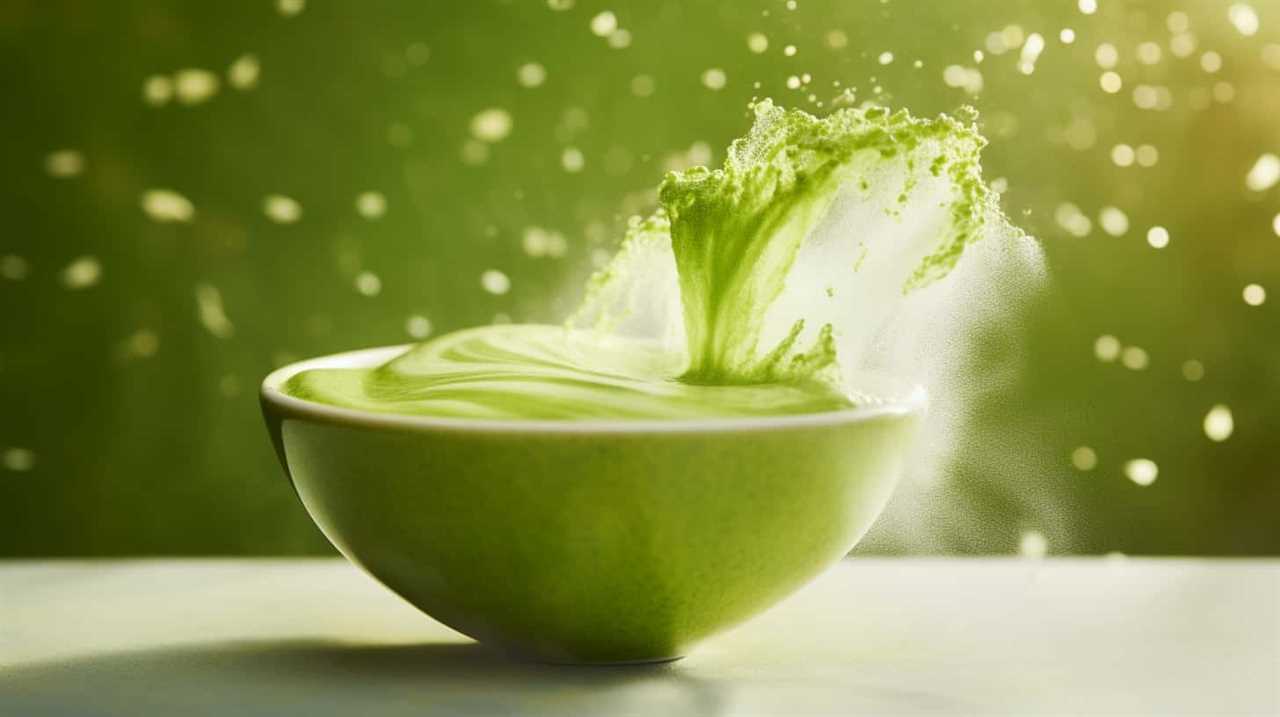
- Color grading: Ceremonial grade teas are often characterized by vibrant and uniform colors. Look for leaves that exhibit a consistent shade of green, indicating a high level of freshness and quality.
- Leaf shape: The shape of the tea leaves can indicate the level of craftsmanship involved in their production. Look for well-rolled leaves with a uniform shape, as this suggests careful processing.
- Bud presence: Ceremonial grade teas often contain an abundance of young buds, which are highly prized for their delicate flavor and aroma. Look for teas that have a high proportion of buds, as this is a sign of exceptional quality.
Aroma and Fragrance
We should pay attention to the aroma and fragrance of the tea when purchasing ceremonial grade tea, as it greatly influences the overall sensory experience.
The aroma of the tea can be described as the scent that’s released when the tea leaves are steeped in hot water. It’s the first thing that greets our senses and sets the tone for the entire tea drinking experience.
The fragrance, on the other hand, refers to the lingering scent that remains after the tea has been consumed.
Together, the aroma and fragrance of ceremonial grade tea create a multi-dimensional sensory experience that can be truly captivating. Not only do they enhance the pleasure of drinking tea, but they can also have health benefits.
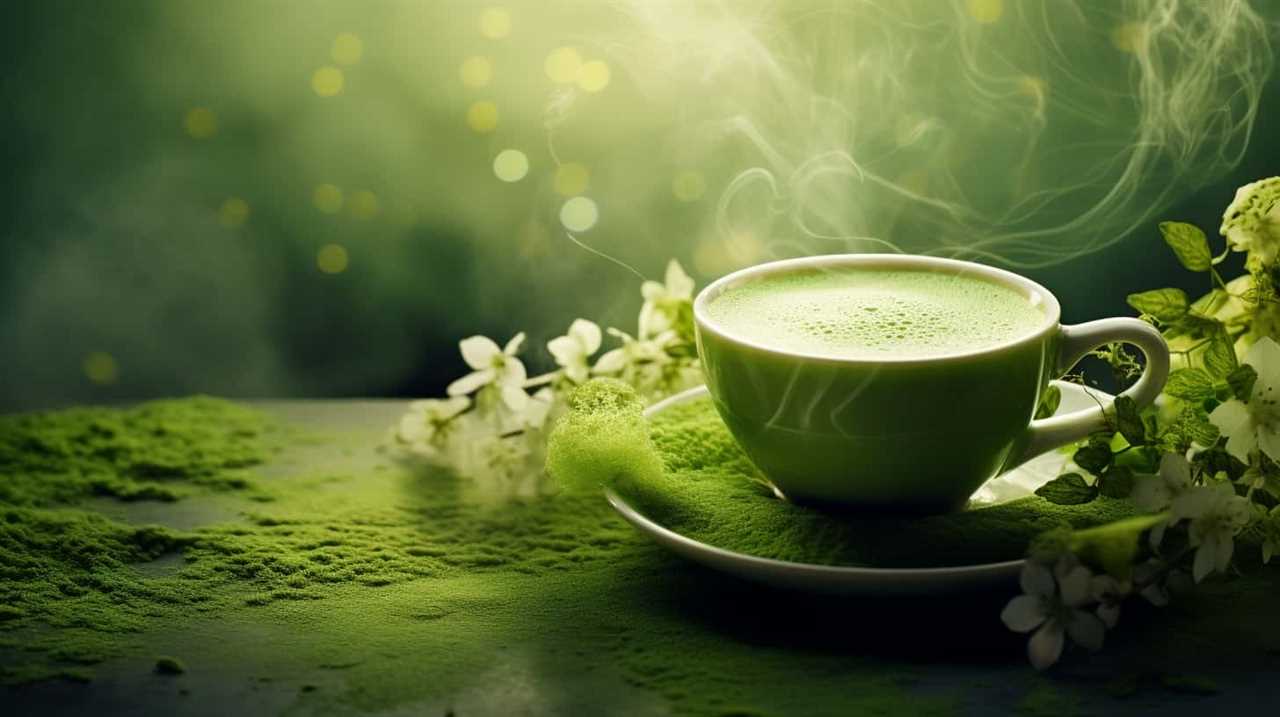
For example, certain aromas like jasmine and lavender have calming properties that can help reduce stress and promote relaxation.
Taste and Flavor Profile
When it comes to evaluating the taste and flavor profile of ceremonial grade tea, there are several key points to consider.
First, the aroma and fragrance should be inviting and enticing, giving a hint of what’s to come.
Secondly, the complexity and balance of the tea’s flavors are crucial, as they can elevate the overall experience and showcase the tea’s quality.
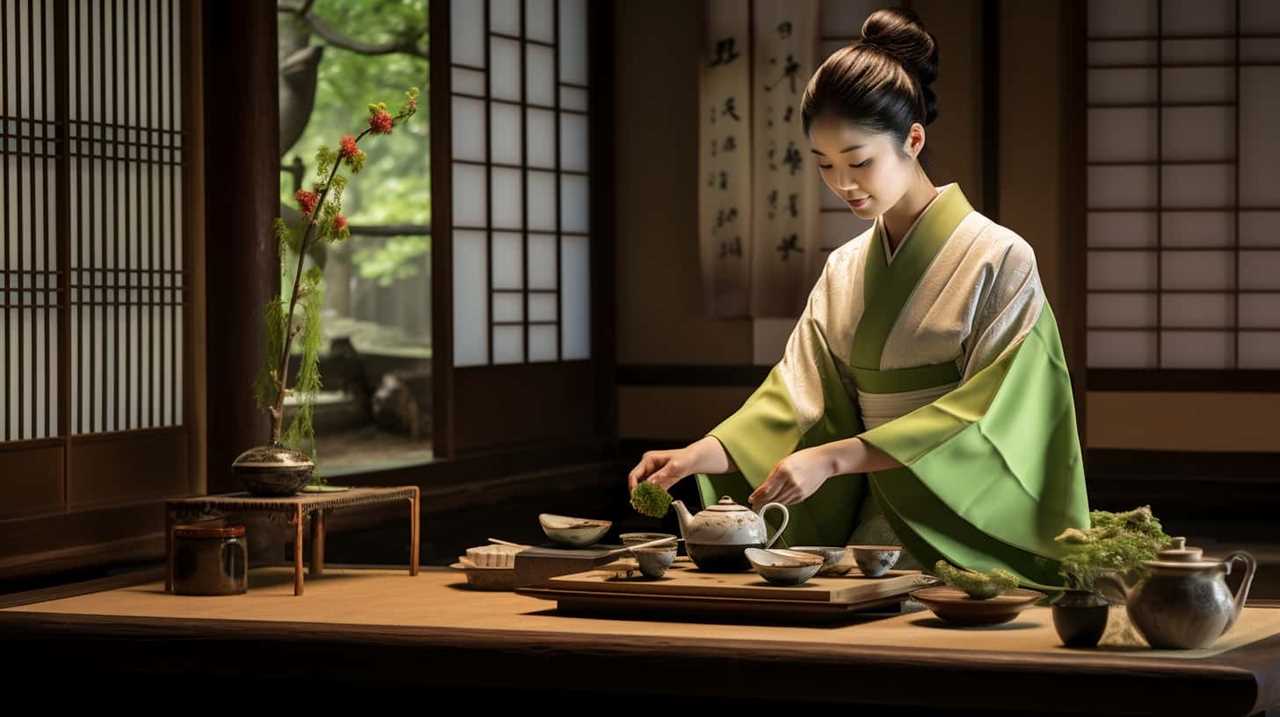
Lastly, the aftertaste and lingering notes can provide valuable insights into the tea’s depth and character.
Paying attention to these points will help tea enthusiasts make informed decisions when purchasing ceremonial grade tea.
Aroma and Fragrance
Our focus will now shift to the captivating aroma and fragrance that define the taste and flavor profile of ceremonial grade tea. When it comes to selecting the perfect tea for your tea ceremony, the aroma and fragrance play a crucial role in enhancing the overall experience. Here are three key aspects to consider:
- Complexity: Look for teas with layered aromas that evolve as you sip. Notes of flowers, fruits, or herbs can add depth and complexity to the tea’s fragrance.
- Freshness: Opt for teas with a vibrant and uplifting aroma. Freshly harvested leaves retain their natural fragrance, resulting in a more enjoyable and invigorating tea experience.
- Balance: Seek teas with a well-balanced aroma that complements the flavor profile. A harmonious blend of floral, earthy, or woody notes can create a holistic and satisfying tea experience.
Complexity and Balance
To fully appreciate the taste and flavor profile of ceremonial grade tea, it’s essential to consider the complexity and balance of its flavors. Complexity refers to the intricate layers of flavors that unfold on the palate, while balance refers to the harmonious blending of these flavors.

When evaluating the complexity and balance of a tea, one must consider factors such as the variety of the tea leaves, the processing methods employed, and the terroir in which the tea was grown.
Sourcing tea from trustworthy suppliers is crucial, as they can provide teas that have been carefully crafted to achieve optimal complexity and balance.
Aftertaste and Lingering Notes
One important aspect to consider when evaluating ceremonial grade tea is the aftertaste and lingering notes it leaves on the palate. This characteristic provides valuable insights into the tea’s overall taste and flavor profile. When assessing the aftertaste, there are several key factors to consider:
- Sweetness and Mouthfeel: A high-quality tea will often have a pleasant sweetness that lingers on the tongue, accompanied by a smooth and velvety mouthfeel. These characteristics contribute to a satisfying and enjoyable tea-drinking experience.
- Brewing Temperature and Time: The aftertaste can be greatly influenced by the brewing temperature and time. Finding the optimal balance between these factors is crucial to bring out the desired flavors and ensure a well-rounded aftertaste.
Considering these elements will allow tea connoisseurs to fully appreciate the complexity and subtleties of ceremonial grade tea.

Now, let’s explore how quality grading systems can further help in selecting the finest teas.
Quality Grading Systems
When evaluating the quality of ceremonial grade tea, we rely on the guidance and classification provided by established quality grading systems. These systems are designed to ensure that the tea meets certain certification requirements and grading standards.
One such system is the Japanese Tea Grading System, which classifies tea based on factors such as leaf appearance, aroma, and taste. The highest grade, known as ‘Gyokuro,’ is characterized by its vibrant green color, sweet aroma, and rich umami flavor.
Another widely recognized grading system is the Chinese Tea Grading System, which evaluates tea based on factors such as leaf shape, color, and aroma. The highest grade, known as ‘Superior,’ signifies the finest quality tea with a well-balanced flavor and exquisite aroma.

These grading systems provide consumers with a reliable way to assess the quality of ceremonial grade tea and make informed purchasing decisions.
Growing and Harvesting Methods
When it comes to growing and harvesting methods of ceremonial grade tea, there are two main factors to consider: organic vs. conventional methods and hand-picked or machine harvested.
Organic methods prioritize the use of natural fertilizers and pest control, ensuring a healthier and more sustainable tea.
Hand-picked leaves, on the other hand, guarantee that only the highest quality leaves are selected, resulting in a more refined and delicate flavor profile.
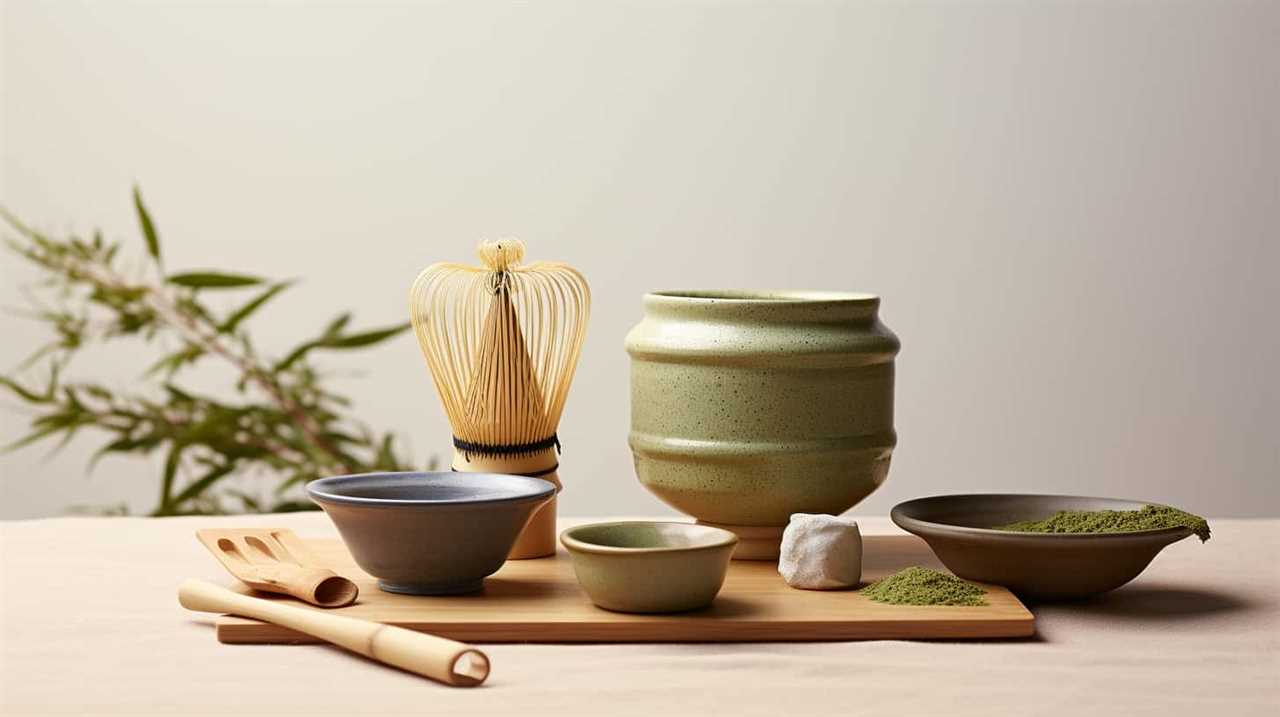
Organic Vs. Conventional Methods
We prefer tea that’s grown and harvested using organic methods. Organic certification ensures that the tea has been produced without the use of synthetic pesticides, herbicides, or fertilizers. This not only benefits our health but also protects the environment from harmful chemicals.
When it comes to environmental sustainability, organic farming practices promote biodiversity, soil health, and water conservation. Here are three reasons why we prioritize organic tea:
- It’s free from harmful chemicals, providing a purer and healthier tea drinking experience.
- Organic farming methods support the long-term health of the soil, preserving its fertility and minimizing erosion.
- By choosing organic tea, we contribute to a sustainable agricultural system that prioritizes the well-being of ecosystems and communities.
As we explore the growing and harvesting methods, it’s important to consider whether the tea was hand-picked or machine harvested.
Hand-Picked or Machine Harvested
After prioritizing organic tea for its health and environmental benefits, it’s important to consider the growing and harvesting methods, specifically whether the tea is hand-picked or machine harvested.
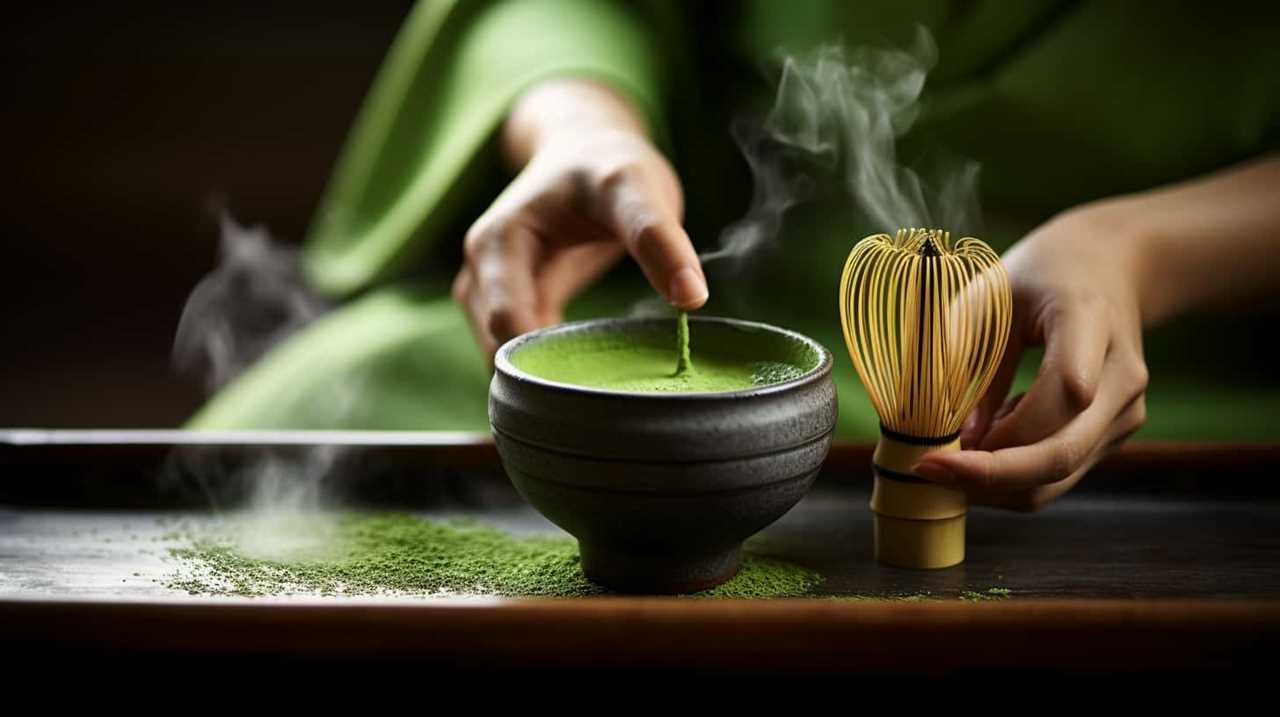
The method of harvesting can greatly impact the quality and flavor of the tea. Hand-picked teas are often considered to be of higher quality because they allow for a careful selection of only the finest leaves. This process also ensures that the leaves aren’t damaged or bruised during harvesting.
On the other hand, machine harvested teas are more efficient and cost-effective, but they may not have the same level of precision as hand-picked teas. Additionally, hand-picked teas are often associated with traditional techniques, while machine harvested teas are linked to modern methods.
Transitioning into the subsequent section about ‘production and processing techniques’, it’s important to consider how these different harvesting methods can affect the overall production and processing of the tea.
Production and Processing Techniques
To understand the quality of ceremonial grade tea, it’s essential to examine its production and processing techniques. These techniques play a crucial role in bringing out the unique flavors and characteristics of the tea.

Growing Conditions: The tea plants used for ceremonial grade tea are typically grown in specific regions with ideal climate and soil conditions. Factors such as altitude, temperature, and rainfall can greatly influence the flavor profile of the tea.
Terroir Influences: Terroir refers to the environmental factors that contribute to the taste and aroma of the tea. This includes the soil composition, weather patterns, and even the surrounding vegetation. Ceremonial grade tea is often prized for its ability to express the distinct terroir of its origin.
Processing Techniques: The way the tea leaves are processed after harvesting also affects the final quality. Careful attention to detail is given to steps such as withering, rolling, oxidation, and drying. Each stage is crucial in preserving the delicate flavors and aromas of the tea.
Packaging and Branding
When it comes to purchasing ceremonial grade tea, the packaging and branding play an important role in our decision-making process. The design and aesthetics of the packaging can give us a glimpse into the quality and authenticity of the tea.

Additionally, reputable tea brands often have quality assurance measures in place to ensure that the tea leaves are of the highest standard.
Design and Aesthetics
While considering the purchase of ceremonial grade tea, we can’t overlook the importance of the packaging and branding, which play a significant role in capturing our attention and conveying the quality of the product. The design and aesthetics of the packaging not only serve as a visual representation of the tea’s quality but also reflect the cultural significance and traditions associated with tea ceremonies.
When it comes to design and aesthetics, here are three key elements to look for:
- Elegant and sophisticated packaging that reflects the traditional nature of tea ceremonies.
- Attention to detail, such as intricate patterns or calligraphy that showcases the craftsmanship and artistry involved in the tea-making process.
- A harmonious color palette that evokes a sense of tranquility and reflects the natural flavors and aromas of the tea.
Quality Assurance Measures
Continuing our exploration of purchasing ceremonial grade tea, let’s now delve into the quality assurance measures that encompass packaging and branding.
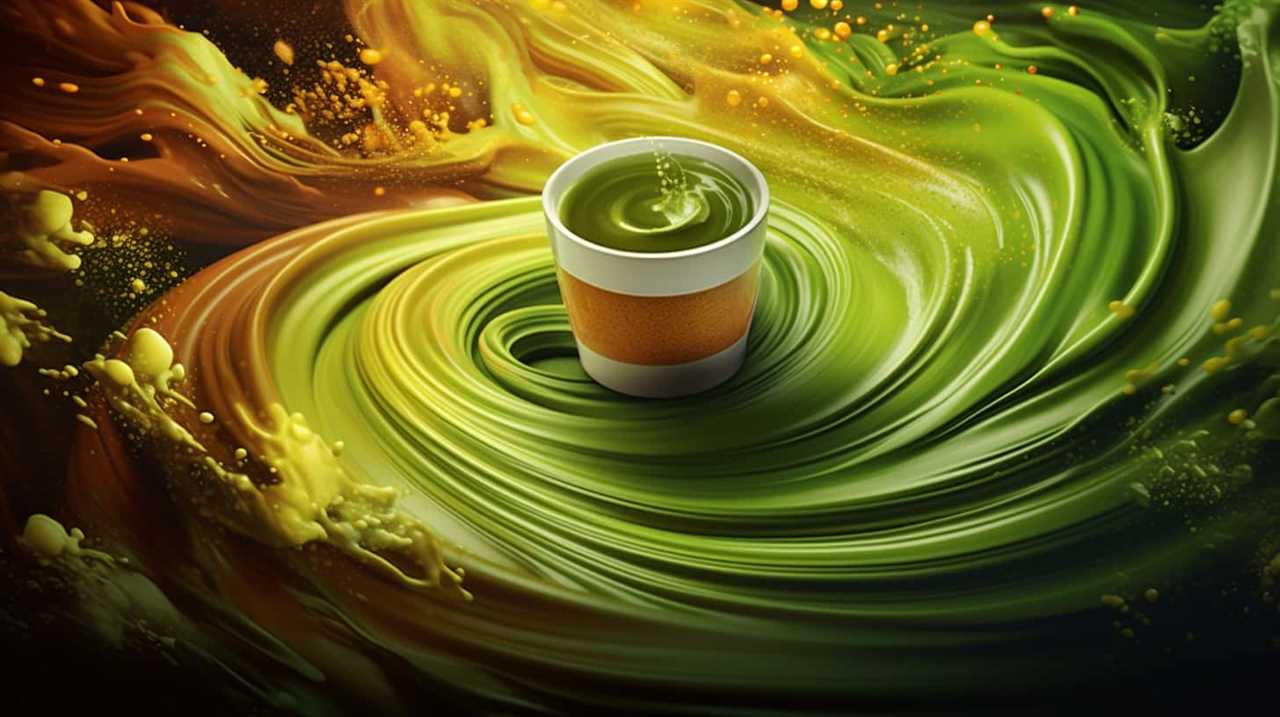
When it comes to high-quality tea, packaging and branding play an essential role in ensuring the product’s authenticity and integrity. Quality control measures are implemented to maintain the tea’s freshness, flavor, and aroma, while traceability measures provide transparency and reassurance to consumers.
One way that tea producers ensure quality control is through the use of airtight packaging. This helps to preserve the tea leaves’ natural oils and flavors, preventing them from deteriorating over time. Additionally, packaging materials should be chosen carefully to protect the tea leaves from light, moisture, and external odors that could alter their taste.
Brand reputation also plays a crucial role in quality assurance. Reputable tea brands often have strict quality control protocols in place, ensuring that only the finest tea leaves are used in their products. These brands may also employ traceability measures, such as providing information about the tea’s origin, the tea garden where it was cultivated, and the processing methods used.
Shelf Life and Storage
To ensure the optimal quality and flavor of ceremonial grade tea, it’s essential to consider its shelf life and proper storage. Proper shelf life management and optimal storage conditions are crucial for preserving the taste and aroma of this prized tea.
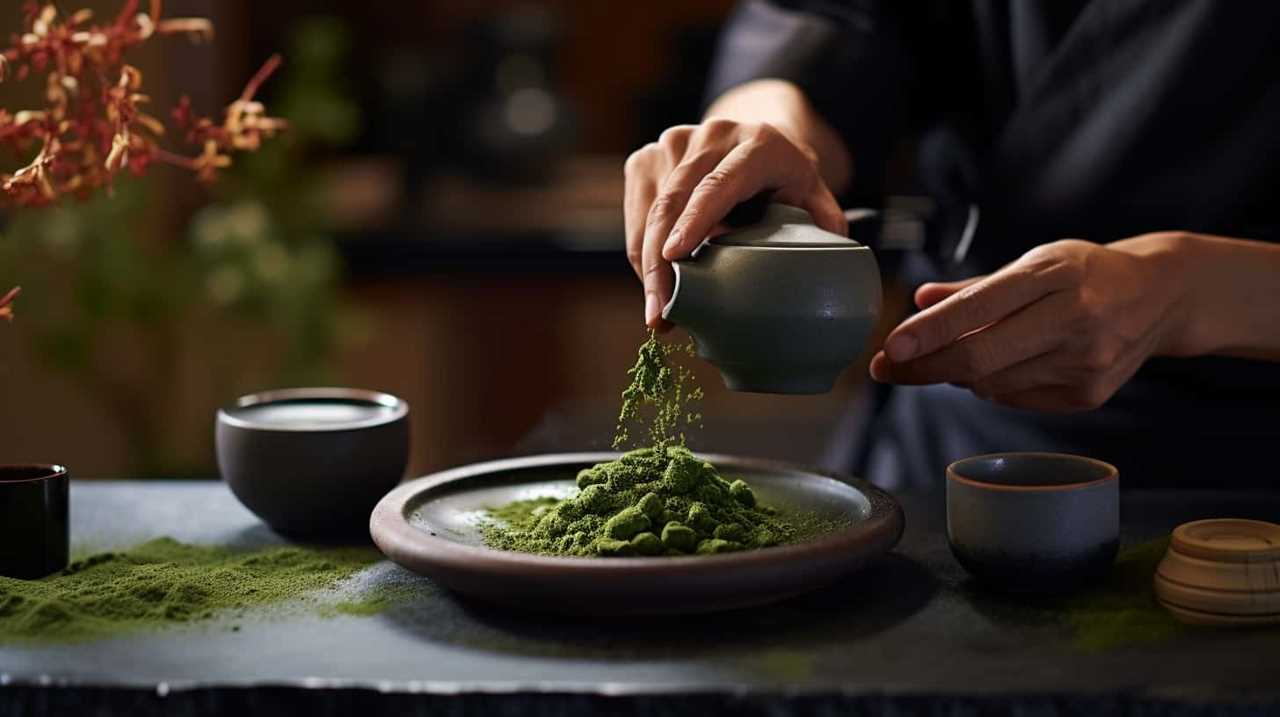
Here are three key factors to keep in mind:
- Temperature: Ceremonial grade tea should be stored in a cool, dry place away from direct sunlight and strong odors. Temperature fluctuations can degrade the tea’s quality, so it’s important to maintain a consistent environment.
- Humidity: Excessive moisture can cause the tea leaves to deteriorate and lose their flavor. It’s recommended to store ceremonial grade tea in an airtight container or resealable bag to protect it from moisture.
- Air Exposure: Oxygen can also impact the tea’s quality, causing it to oxidize and go stale. It’s best to store ceremonial grade tea in airtight containers or packaging to minimize air exposure and prolong its shelf life.
Price and Value for Money
When considering the purchase of ceremonial grade tea, it’s important to assess its price and determine if it offers good value for money.
As tea enthusiasts, we aren’t only looking for the highest quality and taste, but also for fair trade and ethical sourcing practices.
Ceremonial grade tea is often associated with premium pricing due to its superior quality and careful production methods. However, it’s crucial to ensure that the price is justified by the tea’s authenticity and the ethical practices employed by the tea producers.
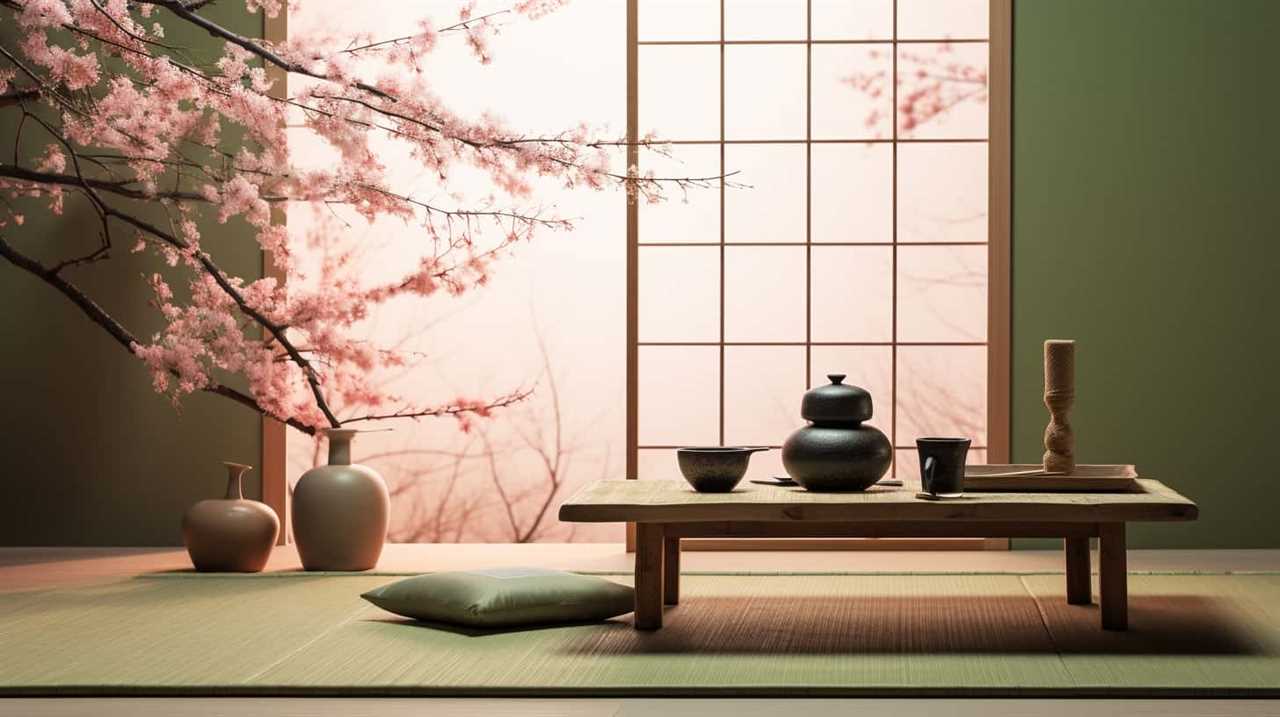
Look for certifications such as fair trade labels or information on ethical sourcing on the packaging or the company’s website. This ensures that your purchase promotes sustainable and responsible practices while also guaranteeing the best possible value for your money.
Sourcing and Trustworthy Suppliers
After assessing the price and value for money of ceremonial grade tea, our next consideration is finding trustworthy suppliers who source their tea ethically and responsibly. When it comes to sourcing ceremonial grade tea, it’s important to prioritize sustainability practices and fair trade partnerships. Here are three key factors to look for when evaluating suppliers:
- Sustainability Practices: Look for suppliers who prioritize sustainable farming methods, such as organic cultivation and environmentally friendly packaging. This ensures that the tea you purchase isn’t only of high quality but also produced with minimal impact on the environment.
- Fair Trade Partnerships: Choose suppliers who’ve established fair trade partnerships with tea farmers. This means that the farmers are paid fair wages and work in safe conditions. Supporting fair trade ensures that your tea is sourced ethically and that the farmers are provided with fair compensation for their hard work.
- Transparent Supply Chain: Seek suppliers who are transparent about their supply chain. This means they can trace the tea back to its origin, ensuring that it’s sourced responsibly and without exploitation.
Certifications and Lab Testing
We prioritize certifications and lab testing when selecting ceremonial grade tea. Certifications are of utmost importance as they serve as a guarantee of quality and authenticity. When purchasing ceremonial grade tea, look for certifications such as USDA Organic, Fair Trade, and Rainforest Alliance. These certifications ensure that the tea has been grown and processed using sustainable and ethical practices.
Lab testing is equally important as it verifies the safety and purity of the tea. It’s crucial to ensure that the tea has undergone rigorous lab testing to meet the highest standards. Look for lab testing requirements such as pesticide residue analysis, heavy metal testing, and microbial analysis. These tests ensure that the tea is free from harmful substances and contaminants, providing you with a safe and high-quality ceremonial tea experience.
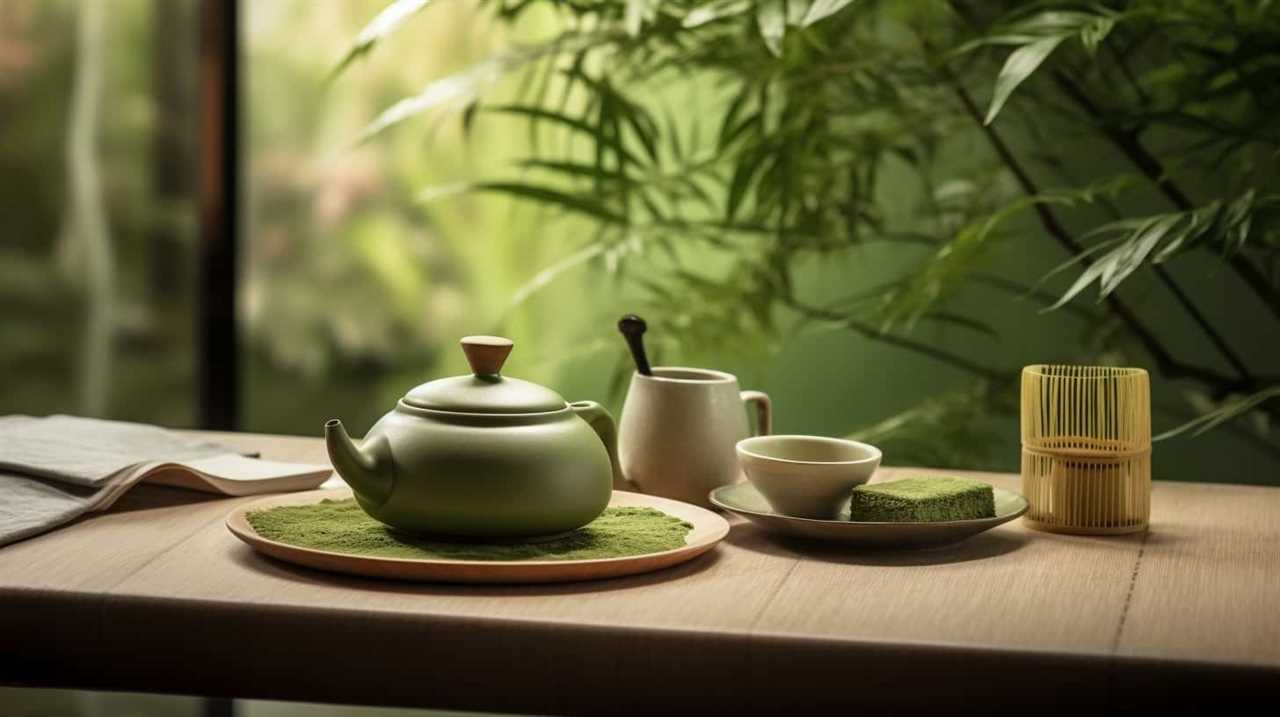
Customer Reviews and Feedback
While considering customer reviews and feedback, it’s essential to prioritize their experiences and opinions in order to make an informed decision when purchasing ceremonial grade tea. Customer satisfaction plays a crucial role in determining the quality and authenticity of the product. By analyzing product ratings provided by customers, one can gain valuable insights into the tea’s taste, aroma, and overall quality.
Here are three key points to consider when evaluating customer reviews and feedback:
- Consistency: Look for consistency in positive reviews, indicating that the tea consistently meets customer expectations.
- Flavor Profile: Pay attention to descriptions of the tea’s flavor profile, as this will help you determine if it aligns with your personal preferences.
- Packaging and Presentation: Consider feedback on the tea’s packaging and presentation, as this can be an indicator of the attention to detail and overall quality of the product.
Recommendations From Tea Experts
To further guide us in our search for the perfect ceremonial grade tea, let’s turn to the expert recommendations that can help us make an informed decision.
When it comes to choosing between organic and conventional farming, tea experts generally recommend opting for teas that have been grown organically. Organic farming practices ensure that the tea leaves are free from harmful pesticides and chemicals, resulting in a purer and more natural flavor. Additionally, organic farming is more sustainable as it promotes soil health, biodiversity, and reduces the impact on the environment.

Sustainability measures are also important to consider when purchasing ceremonial grade tea. Look for teas that are sourced from farms that prioritize water conservation, energy efficiency, waste reduction, and fair labor practices.
Brewing and Preparation Guidelines
When brewing and preparing ceremonial grade tea, it’s essential to follow specific guidelines. To ensure the best flavor and aroma, pay attention to the brewing temperature and steeping time.
Here are some guidelines to help you achieve the perfect cup of ceremonial tea:
- Brewing Temperature: Use water that’s heated to the appropriate temperature for the specific type of tea you’re brewing. For example, green teas generally require lower temperatures around 160-175°F (70-80°C), while black teas can handle higher temperatures around 200-212°F (90-100°C).
- Steeping Time: Different teas have different steeping times, and it’s important to follow them carefully. Green teas usually require shorter steeping times of 1-3 minutes, while black teas may need 3-5 minutes. Oversteeping can result in a bitter taste, while understeeping may not extract the full flavor of the tea.
Frequently Asked Questions
How Long Does Ceremonial Grade Tea Stay Fresh After Opening the Package?
After opening the package, ceremonial grade tea typically stays fresh for about 6-12 months. To ensure the longest shelf life, store it in an airtight container away from light, heat, and moisture.

Can Ceremonial Grade Tea Be Used in Cooking or Baking?
Can ceremonial grade tea be used in cooking or baking? Absolutely! Cooking with ceremonial grade tea can add a unique flavor profile to savory dishes, while baking with it can infuse desserts with a delicate and aromatic taste.
Are There Any Specific Health Benefits Associated With Ceremonial Grade Tea?
When it comes to ceremonial grade tea, there are indeed specific health benefits to consider. Not only is it revered for its rich flavor and aroma, but it is also known to promote relaxation and mindfulness, making it perfect for traditional tea ceremonies.
What Is the Ideal Water Temperature for Brewing Ceremonial Grade Tea?
For the ideal water temperature when brewing ceremonial grade tea, we recommend using water that is around 175°F to 185°F. This allows the delicate flavors and aromas to steep perfectly in the recommended steeping time.
Can Ceremonial Grade Tea Be Enjoyed With Milk or Sweeteners?
When enjoying ceremonial grade tea, it is best to savor its natural flavors without the addition of milk or sweeteners. This preserves its traditional recipes and cultural significance, allowing us to fully appreciate its exquisite taste and aroma.
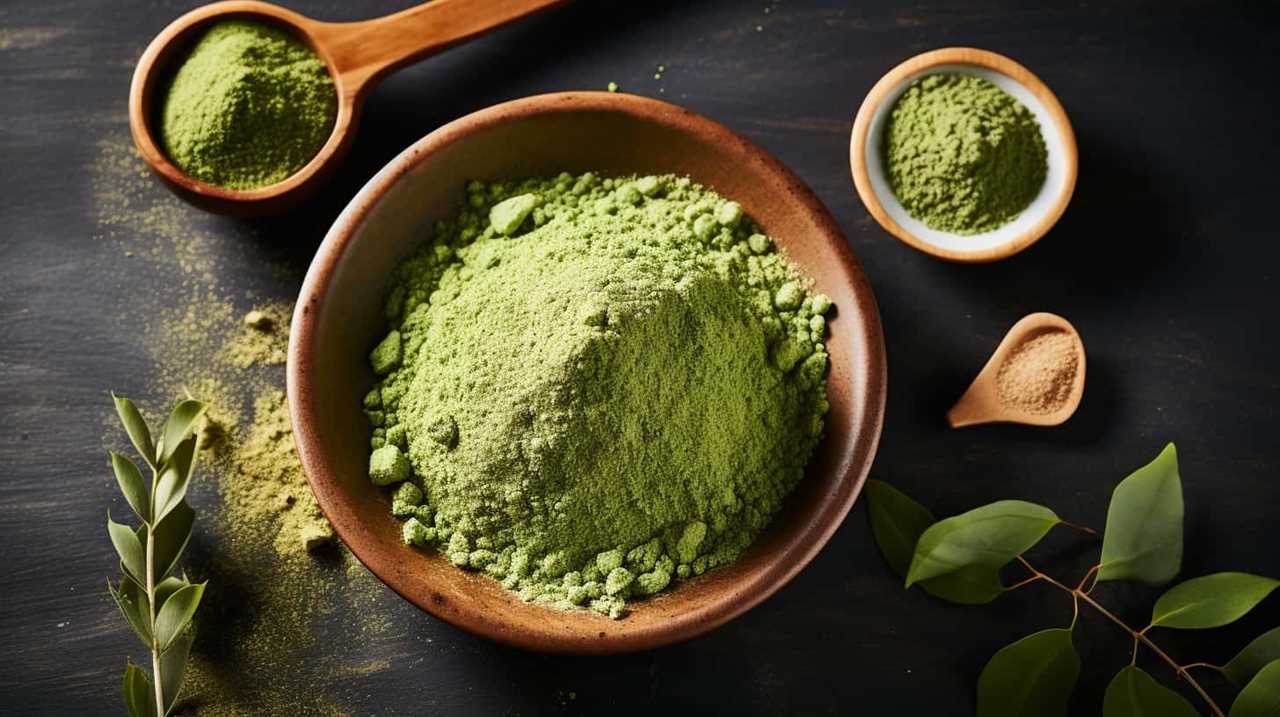
Conclusion
In the world of ceremonial grade tea, authenticity and quality are paramount. From the vibrant color and enticing aroma to the delicate taste and flavor profile, every sip is a sensory experience.
With certifications, lab testing, and customer reviews as guides, one can ensure the tea’s purity and origin. Recommendations from tea experts further enhance the journey.
So, choose wisely, brew with care, and let the ethereal beauty of ceremonial grade tea transport you to a realm of tranquility and bliss.
Justin is a seasoned author, coffee and tea enthusiast, and an essential member of the Cappuccino Oracle team. With a keen appreciation for the complexities of coffee, coffee alternatives, and tea, Justin has dedicated his professional career to exploring these realms and sharing his insights with readers worldwide.
Justin’s immersion in the world of coffee, coffee alternatives, and tea began at a young age, kindling a passion that extended beyond mere consumption. This love for these beverages led him to combine his talent for writing with his devotion to coffee and tea, bringing him to Cappuccino Oracle as a dedicated author.
Matcha
Unveiling The Mysteries Of Matcha: Insights On Its Origins, Production, And Quality

Have you ever been curious about the mysteries behind the rich and natural flavors of matcha? If so, get ready to join me on an adventure as we uncover the secrets of matcha, delving into its origins, production, and quality.
As a lover of all things tea, I have delved deep into the world of matcha, immersing myself in its rich history and intricate production process. From the shade-grown tea leaves to the meticulous grinding technique, every step is a labor of love that culminates in the velvety smooth powder we know as matcha.
Join me as we unravel the secrets behind this ancient Japanese tradition and discover why quality is key when indulging in this verdant elixir. We’ll explore the nuances of flavor, the importance of sourcing, and even delve into the fascinating world of other tea varieties.
So grab a cup, sit back, and let’s dive into the captivating world of matcha.
Key Takeaways
- Matcha tea is made from powdered green tea leaves and has a long and labor-intensive production process.
- Premium matcha is made from the first harvest in early spring, using the top 3 sprouts of the tea plant and ground tencha leaves.
- Cheaper matchas may skip some steps in the production process and are more suitable for matcha lattes.
- High-quality matcha is recommended for sparing consumption, as it has a smoother flavor and more health benefits compared to cheaper matchas.
What is matcha?
I’ve learned that matcha is a powdered green tea made from special tea leaves that are shaded before harvest, and it has a long and labor-intensive production process.
There are different types of matcha available, but the premium matcha is made from the first harvest in early spring, using only the top 3 sprouts of the tea plant. The leaves are then steamed, dried, and have their stems removed before being ground into a fine powder using a specialized mill made of granite.
It’s important to note that high-quality matcha is recommended for sparing consumption, as it has a complex production process that results in a smooth flavor. Matcha also offers various health benefits, such as being rich in antioxidants, boosting metabolism, and improving mental alertness.
Production process
The matcha production process involves shading the tea leaves before harvest and selecting the top three sprouts of the tea plant for premium matcha. Shading is a technique used to enhance the flavor and quality of the tea leaves. By covering the tea plants with shade, the leaves produce more chlorophyll and amino acids, resulting in a vibrant green color and a rich, umami taste.
After the shading period, only the top three sprouts of the tea plant are carefully handpicked for premium matcha. These selected leaves, known as tencha leaves, are then steamed, dried, and have their stems removed.
Finally, the tencha leaves are ground into a fine powder using a specialized granite mill. This process results in the smooth and concentrated matcha powder that we enjoy.
Quality and consumption
Let me tell you, indulging in high-quality matcha is like sipping a vibrant green elixir that awakens your taste buds and nourishes your body with its rich flavor and numerous health benefits. Matcha’s health benefits are truly remarkable. Packed with antioxidants, vitamins, and minerals, matcha is known to boost metabolism, enhance focus and concentration, and strengthen the immune system.
But not all matcha is created equal. Different grades of matcha exist, ranging from ceremonial grade to culinary grade. Ceremonial grade matcha is made from the highest quality tencha leaves and has a smooth, vibrant green color and a delicate, umami flavor. It is best enjoyed on its own, whisked with hot water.
On the other hand, culinary grade matcha is more affordable and is suitable for making matcha lattes, smoothies, and baked goods. Although it may have a slightly bitter taste and a duller color, it still provides health benefits.
So, whether you choose to indulge in high-quality ceremonial grade matcha or opt for the more affordable culinary grade, incorporating matcha into your routine is a delicious way to reap its health benefits.
Frequently Asked Questions
What are some popular ways to enjoy matcha besides drinking it as tea?
Besides drinking matcha as tea, some popular ways to enjoy it include indulging in matcha desserts like matcha ice cream, matcha cake, and matcha cookies. Additionally, matcha smoothies are a refreshing and healthy option.
Are there any specific health benefits associated with consuming matcha?
I’m no expert, but matcha is said to have potential health benefits. Some claim it can aid in weight loss due to its high antioxidant content and metabolism-boosting properties. However, more research is needed to confirm these claims.
How does the quality of matcha affect its flavor and overall experience?
The quality of matcha directly affects its flavor and overall experience. Higher quality matcha, made from carefully selected leaves and processed with precision, offers a smoother and more vibrant flavor, while lower quality matcha may have a less appealing taste and color.
Can matcha be used in cooking or baking?
"Where there’s matcha, there’s a way! Matcha can be used in a variety of cooking and baking recipes, adding a vibrant green color and a unique earthy flavor to dishes like matcha desserts."
Are there any specific tips or techniques for properly preparing matcha tea at home?
To properly prepare matcha tea at home, start by sifting the matcha powder to remove any clumps. Then, choose water at around 175°F to 180°F for the best flavor. Gradually add water to the matcha and whisk in a "W" or "M" motion until frothy. Enjoy!
Conclusion
In conclusion, matcha tea is not just a beverage, but a rich and fascinating tradition that has evolved over centuries.
From its origins in Japan to its intricate production process, matcha is a labor of love.
The quality of matcha is crucial, as the steps taken in its production directly impact its flavor and aroma.
Whether you’re a matcha connoisseur or a beginner, there is a matcha tea out there for you.
So, why not indulge in a cup of this vibrant green elixir and experience the magic of matcha for yourself? It’s a journey worth embarking on!
Arf, an author and an innovative enthusiast of coffee, coffee alternatives, and tea, plays a crucial role as a contributor to the esteemed Cappuccino Oracle platform. Renowned for his curiosity and passion for these captivating beverages, Arf has carved out a unique space for himself in the world of exploration and writing. He realized that coffee, coffee alternatives, and tea are not mere drinks to keep one awake, but universes of flavors and stories waiting to be explored.
Arf’s articles for Cappuccino Oracle blend meticulous research with personal experiences, providing readers with an in-depth understanding of various types of coffee, coffee alternatives, and tea, along with their unique characteristics, cultures, and histories. His honest reviews and engaging narratives guide readers on their own journeys, helping them discover their preferences and find their perfect brew.
Matcha
Unveiling The Truth Behind Starbucks’ Matcha: A Disappointing Blend

Being a lover of tea, I was eager to sample Starbucks’ matcha beverages, anticipating a flavorful and genuine taste. However, to my dismay, I found that it was a subpar mixture of inexpensive green tea powder and an excessive amount of sugar. This was a stark contrast to the customary matcha experience that I had grown accustomed to.
The use of low-quality matcha by Starbucks is driven by the need for mass production and a consistent taste across all locations. But in this pursuit, they have sacrificed the true essence of matcha. Authentic matcha production involves meticulous steps to ensure a high-quality and flavorful product, steps that Starbucks seems to skip.
The result is a matcha latte packed with 32 grams of sugar, equivalent to a can of soda, and a whopping 240 calories. It’s time to unveil the truth behind Starbucks’ matcha and explore better options for a truly satisfying tea experience.
Key Takeaways
- Starbucks uses a cheap green tea powder for their matcha drinks, which may not even be considered matcha.
- The cheap matcha powder is mixed with a lot of sugar, negating the health benefits and undermining the quality of the tea.
- Starbucks’ matcha latte contains a high amount of sugar, similar to a can of soda, and has a significant number of calories.
- To have a better matcha experience, it is recommended to explore premium, first harvest matcha made by talented farmers in Japan and to try different matcha options to find preferred taste.
What is Starbucks Matcha?
Starbucks Matcha is a cheap green tea powder mixed with a high amount of sugar, which not only undermines the health benefits of matcha but also fails to deliver the natural, great-tasting flavor of authentic matcha tea.
The ingredients used in Starbucks matcha include low-quality green tea powder that is likely produced on a large scale. Unlike traditional matcha production methods, Starbucks skips certain steps to save time and money. These steps, such as shading the tea plants to reduce bitterness and selecting the top leaves for their flavor and nutrients, are crucial in creating high-quality matcha.
Instead, Starbucks opts for a blend of cheap green tea powder mixed with sugar, resulting in a dull and bitter flavor. This disappointing blend of ingredients does not live up to the standards of true matcha tea.
Quality vs. Cheap Matcha
Indulging in high-quality matcha is like savoring a delicate melody that dances on your taste buds, while settling for cheap matcha is akin to a discordant symphony that leaves a bitter aftertaste. When it comes to matcha, quality matters. Traditional matcha production is an art that requires time, patience, and attention to detail. The importance of shading the tea plants, selecting the top leaves, and using a stone mill to grind the leaves into a fine powder cannot be overstated. These steps not only enhance the flavor but also preserve the health benefits of matcha. High-quality matcha is rich in antioxidants, boosts metabolism, and promotes a sense of calm. On the other hand, cheap matcha often lacks these qualities as it skips crucial steps and is mixed with sugar and other additives. Don’t settle for a subpar matcha experience; choose high-quality matcha for its exceptional taste and health benefits.
| Traditional Matcha Production |
|---|
| Shading the tea plants |
| Selecting the top leaves |
| Grinding with a stone mill |
The importance of traditional matcha production cannot be overstated. These steps not only enhance the flavor but also preserve the health benefits of matcha. High-quality matcha is rich in antioxidants, boosts metabolism, and promotes a sense of calm. On the other hand, cheap matcha often lacks these qualities as it skips crucial steps and is mixed with sugar and other additives. Don’t settle for a subpar matcha experience; choose high-quality matcha for its exceptional taste and health benefits.
Recommendations for Better Matcha
Exploring different matcha options can lead to a better matcha experience. When it comes to matcha, not all options are created equal. While Starbucks may offer a convenient matcha latte, there are alternative options that provide a more authentic and higher quality experience.
Premium matcha, specifically first harvest matcha, is made by talented farmers in Japan and can be enjoyed plain, without the need for excessive sugar or additives. By choosing premium matcha, you can reap the full benefits that matcha has to offer, such as its high antioxidant content and potential health benefits.
Additionally, exploring different types of matcha, such as Japanese black tea, can expand your taste palate and introduce you to new and exciting flavors. So, why settle for a disappointing blend when there are better matcha options out there waiting to be explored?
Frequently Asked Questions
How is Starbucks matcha different from traditional matcha?
Starbucks matcha differs from traditional matcha in terms of quality and taste. One interesting statistic is that Starbucks’ matcha latte contains 32 grams of sugar, similar to a can of soda, which undermines the health benefits of matcha.
What are the health benefits of matcha and how do they differ between Starbucks matcha and premium matcha?
The health benefits of matcha include high levels of antioxidants, increased energy, and improved focus. However, Starbucks matcha quality is compromised due to the use of cheap powder mixed with sugar, negating these benefits.
Can you customize the sweetness level of Starbucks matcha drinks?
Yes, you can customize the sweetness level of Starbucks matcha drinks. They offer popular matcha drink variations like matcha latte and matcha frappuccino, allowing customers to choose the amount of sweetener they prefer.
Are there any alternative options for matcha drinks at Starbucks?
Yes, there are alternative options for matcha drinks at Starbucks. However, it’s important to note that the taste may not be comparable to traditional matcha. Exploring different matcha options and Japanese black tea can provide a better experience.
What are the steps involved in producing high-quality matcha and how does Starbucks’ matcha production differ?
Starbucks’ matcha production process differs from traditional matcha production in Japan. High-quality matcha involves shading the tea plants, selecting the top leaves, steaming, drying, and grinding them. However, Starbucks skips these steps, resulting in a lower quality and less authentic matcha experience.
Conclusion
In conclusion, after delving into the truth behind Starbucks’ matcha, it’s clear that their blend falls short of expectations. The use of cheap green tea powder mixed with excessive sugar dilutes any potential health benefits and fails to deliver an authentic matcha experience.
To truly enjoy the rich and flavorful taste of matcha, it’s recommended to explore premium, first harvest options crafted by skilled Japanese farmers. Don’t settle for subpar matcha; treat yourself to a tea experience that’ll leave your taste buds dancing with delight.
Arf, an author and an innovative enthusiast of coffee, coffee alternatives, and tea, plays a crucial role as a contributor to the esteemed Cappuccino Oracle platform. Renowned for his curiosity and passion for these captivating beverages, Arf has carved out a unique space for himself in the world of exploration and writing. He realized that coffee, coffee alternatives, and tea are not mere drinks to keep one awake, but universes of flavors and stories waiting to be explored.
Arf’s articles for Cappuccino Oracle blend meticulous research with personal experiences, providing readers with an in-depth understanding of various types of coffee, coffee alternatives, and tea, along with their unique characteristics, cultures, and histories. His honest reviews and engaging narratives guide readers on their own journeys, helping them discover their preferences and find their perfect brew.
Matcha
The Ultimate Guide To Using Chashaku: Your Matcha Essential

Being a lover of matcha, I am aware that the crucial factor in achieving the perfect matcha bowl is the equipment we utilize. When it comes to preparing matcha, there is one tool that is particularly essential: the chashaku.
This bamboo spoon, with its elegant design and precise measurements, is the secret weapon of matcha lovers worldwide. In this ultimate guide, I will take you on a journey through the history and evolution of the chashaku, and show you how to use it like a pro.
From its origins as a metal or ivory scoop to its modern-day incarnation in bamboo, the chashaku has come a long way. With its 48° bend and 18mm length, it effortlessly scoops the perfect amount of matcha from its container.
So grab your chashaku and get ready to elevate your matcha game to new heights. Let’s dive in and discover the wonders of this matcha essential.
Key Takeaways
- Chashaku is a bamboo spoon used to scoop matcha powder in the Japanese tea ceremony and by matcha lovers worldwide.
- Chashaku is one of the three important tea utensils used in the tea ceremony and is about 18mm in length with a 48° bend at the end for scooping.
- Chashaku is made of bamboo to avoid negative reactions with matcha powder and is a great measurement tool for matcha powder.
- Two scoops of chashaku is the standard amount for a bowl of matcha tea, and it is easy to maneuver in matcha tins or natsume due to its small size.
What is Chashaku?
Chashaku is a bamboo spoon used to scoop matcha powder, and it’s one of the three important tea utensils used in the Japanese tea ceremony.
Made from a single piece of bamboo, this elegant tool has a long history dating back to the Muromachi period in Japan. Originally crafted from metal or ivory, chashaku evolved to be made of bamboo due to its natural properties and to avoid any negative reactions with matcha powder.
The design of chashaku is both functional and beautiful, with a length of about 18mm and a 48° bend at the end for easy scooping. There are different styles of chashaku scoops, each with its own unique shape and characteristics. The back of the chashaku has a rough texture, while the face is smooth and sleek.
Whether you’re a matcha lover or a tea ceremony enthusiast, using a chashaku adds a touch of authenticity and tradition to your matcha preparation.
History and Evolution
During the Muromachi period in Japan, the chashaku spoon evolved from being made of metal or ivory to its current bamboo form, which is about 18mm in length and has a 48° bend at the end for easier scooping. The history and evolution of the chashaku is a testament to its significance in Japanese tea ceremonies and its cultural importance in matcha preparation.
| The significance of chashaku in Japanese tea ceremonies | The cultural importance of chashaku in matcha preparation |
|---|---|
| Chashaku is one of the three important tea utensils used in the tea ceremony. | Chashaku is a great measurement tool for matcha powder. |
| Chashaku originated in Japan during the Muromachi period. | Chashaku’s small size allows for easy maneuvering in matcha tins or natsume. |
| Originally made of metal or ivory, chashaku evolved to be made of bamboo. | Chashaku is made from a single piece of bamboo and shaped with a bend for the scoop. |
| Chashaku is made of bamboo to avoid negative reactions with matcha powder. | The back of chashaku has a rough texture, while the face is smooth and sleek. |
The chashaku’s role in Japanese tea ceremonies cannot be understated. It is one of the three essential utensils used in the tea ceremony, alongside the chawan (tea bowl) and chasen (tea whisk). The chashaku’s small size and precise measurement make it the perfect tool for scooping matcha powder. Its evolution from metal or ivory to bamboo shows the cultural importance placed on this utensil. The chashaku’s design, with its gentle bend and smooth face, allows for easy and graceful scooping of matcha. Using the chashaku is not only practical but also a way to honor the centuries-old tradition of matcha preparation.
How to Use Chashaku
To use the chashaku, I simply hold it like a pencil and dip the scoop into the matcha container. Then, I carefully lift the chashaku scoop out and place it over the matcha bowl to dump the powder.
It’s a simple and elegant technique that ensures the perfect amount of matcha every time.
But did you know that there are alternative ways to use the chashaku? Some matcha lovers prefer to use a teaspoon or a regular spoon to scoop their matcha powder. While these alternatives may work in a pinch, they don’t offer the same precision and authenticity as the chashaku.
The chashaku’s unique design and size make it the ideal tool for measuring matcha powder. Plus, using the chashaku adds a traditional touch to the matcha preparation process, enhancing the overall experience.
So why settle for anything less? Embrace the chashaku and elevate your matcha game to the next level.
Frequently Asked Questions
What are the different types of materials used to make chashaku besides bamboo?
There’s something truly magical about the chashaku, the bamboo spoon that gracefully scoops matcha powder. While bamboo is the traditional material, chashaku can also be made from metal or ivory, although these alternatives are less common.
Can chashaku be used to scoop other powders besides matcha?
Yes, chashaku can be used to scoop other powders besides matcha. However, it is primarily designed for scooping matcha powder and is most commonly used in Japanese tea ceremonies. To properly clean and care for a chashaku, it is recommended to wipe it with a dry towel or tissue to avoid water damage. The chashaku is a versatile tool with different uses in the tea ceremony, making it an essential item for matcha lovers.
How long does a chashaku typically last before it needs to be replaced?
A chashaku typically lasts for a long time, but the lifespan can vary depending on the material. Bamboo chashaku is the most common and durable option, while metal or ivory may wear down over time. Proper care involves cleaning with a dry towel or tissue to avoid water damage.
Can chashaku be used with different types of matcha bowls or is it specific to a certain style?
Absolutely! Chashaku can be used with various types of matcha bowls, adapting to different styles. Its small size and unique design make it perfect for scooping matcha powder and adding a touch of elegance to your matcha preparation.
Are there any alternative utensils that can be used in place of chashaku for scooping matcha powder?
Yes, there are alternative utensils for scooping matcha powder, such as a teaspoon or a small spoon. However, using a chashaku has its benefits. Its unique design allows for precise measurements and easy maneuvering in matcha tins.
Conclusion
In conclusion, using chashaku isn’t just a practical way to measure and scoop matcha powder, but it’s also an essential tool for embracing the art and tradition of the Japanese tea ceremony.
While some may argue that using a regular spoon can achieve the same result, chashaku offers a unique experience that connects us to centuries of tea culture. Imagine holding the slender bamboo spoon, feeling the weight of tradition in your hand, and delicately scooping the vibrant green matcha powder.
It’s a sensory journey that brings us closer to the beauty and mindfulness of matcha preparation. So, embrace the chashaku, and let it elevate your matcha experience to new heights.
Arf, an author and an innovative enthusiast of coffee, coffee alternatives, and tea, plays a crucial role as a contributor to the esteemed Cappuccino Oracle platform. Renowned for his curiosity and passion for these captivating beverages, Arf has carved out a unique space for himself in the world of exploration and writing. He realized that coffee, coffee alternatives, and tea are not mere drinks to keep one awake, but universes of flavors and stories waiting to be explored.
Arf’s articles for Cappuccino Oracle blend meticulous research with personal experiences, providing readers with an in-depth understanding of various types of coffee, coffee alternatives, and tea, along with their unique characteristics, cultures, and histories. His honest reviews and engaging narratives guide readers on their own journeys, helping them discover their preferences and find their perfect brew.
-

 Americano3 weeks ago
Americano3 weeks agoHow to Make Americano With Moka Pot
-

 Americano7 days ago
Americano7 days agoHow to Make Korean Iced Americano
-

 Americano4 weeks ago
Americano4 weeks agoHow to Make an Americano in a French Press
-

 Americano3 weeks ago
Americano3 weeks agoHow to Make Iced Americano With Instant Coffee
-

 Americano4 weeks ago
Americano4 weeks agoWhat to Add to an Americano at Starbucks
-

 Americano4 weeks ago
Americano4 weeks agoHow to Make Americano With a Nespresso Machine
-

 Americano3 weeks ago
Americano3 weeks agoHow to Make Americano With Bialetti
-

 Americano3 weeks ago
Americano3 weeks agoHow to Make Dutch Bros Americano

















